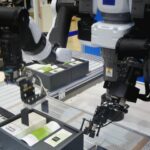In an asphalting crusade through the annals of automotive technology, the emergence of driverless vehicles often referred to as autonomous or self-driving cars marks the dawn of a new motoring era. This revolution is not just a pivot in the automotive industry; it is a transformation that will echo down urban landscapes and personal freedoms alike.
But as with any great technological swerve, the road to mainstream adoption is speckled with regulatory potholes, public skepticism, and complex ethical decisions.
This blog post is a thorough exploration of the phenomenon from a technology and society standpoint. We’ll shine the headlights on what driverless vehicles are, how they work, the obstacles they face, and where they might lead us.
Nuts and Bolts: Understanding Driverless Technology
Autonomous vehicle technology is an intricate web of hardware, software, cloud computing, and interconnected sensors. These vehicles aim to replicate human behaviors and decision-making processes, not just on the road, but in the microcosm of traffic. The technology suite of a driverless car is a marvel of modern engineering, encompassing:
- Lidar systems that pulse lasers around the vehicle’s vicinity to form a detailed map of the environment.
- Radar sensors for object detection and to gauge the speed and location of other cars on the road.
- Cameras with image recognition algorithms that interpret visual data from the vehicle’s surroundings.
- GPS navigation systems for route planning and to create a dynamic map of the immediate vicinity.
- Artificial intelligence is the nucleus of the self-driving car that processes sensor data and makes driving decisions.
The fusion of these technologies enables autonomous vehicles to perceive, process, and react to their surroundings, theoretically outperforming human drivers in their ability to anticipate and avoid accidents.
As we explore the remarkable advancements in technology, the emergence of driverless vehicles stands out as a pivotal development in the transportation landscape. These autonomous systems promise to revolutionize our daily commutes, enhancing safety and efficiency on the roads.
However, as with any emerging technology, challenges remain, particularly concerning the integration of these vehicles into existing infrastructure. To understand how various innovations, including smart tech in pest control, are shaping our future, you can learn more here.
The Promise of a Hands-Free Commute
Driverless vehicles bring forth a trove of promises and potentials. They pledge to alleviate traffic jams through the creation of an inter-communicating and coordinated network of cars.
They may also dip into the well of environmental sustainability by reducing emissions. Furthermore, autonomous cars have the potential to redefine transportation by being the archetypes of accessibility, particularly for the elderly and those with disabilities.
The expectancy of safety is another forte in the driverless car’s portfolio. By eliminating human error which is the cause of nearly 95% of all traffic accidents self-driving cars could substantially reduce fatalities and injuries on the road.
Proponents also tout the convenience of a ride freed from the constraints of driving, bristling at the notion of productivity in transit and the retrieval of ‘stolen’ hours from the workday.
The Hitchhiker’s Ethical Guide to AI on the Road
Yet, nestled within the flickering promise of progress are the palpable shadows of ethical dilemmas. An autonomous vehicle’s AI is not just a marvel it’s a moral agent in the making, one that must make split-second decisions in instances of unavoidable harm.
With this, AI algorithms could be tasked with deciding the lesser evil potentially fatal outcomes that spotlight a car’s occupants versus external bystanders.
The horizon is just as overcast with the possible obsolescence of certain jobs. The scars of displaced workers from technological innovations are part and parcel of societal advancement, and the driverless revolution is set to be no different. For taxi drivers, truckers, and delivery service workers, this seismic shift carries a personal and professional toll that cannot be ignored.
Regulatory Rose Gardens and Consumer Confidence
One of the tallest barriers facing autonomous vehicles is the need to draft a labyrinth of regulations to govern their deployment and operation.
These laws must straddle both state and federal levels, wrestling with everything from insurance liabilities to privacy concerns. The process is akin to paving a new legal and regulatory highway at a time when our legal frameworks are ill-equipped to match the pace of technological change.
Consumer confidence too is a mountain to scale. Surveys reveal that a significant percentage of the population remains wary of autonomous technology, particularly in light of high-profile accidents involving self-driving cars.
Winning the trust of the public is no less crucial than the innovation itself and would likely require widespread educational campaigns and transparent testing and reporting procedures.
Navigating the Road Ahead
The final stretch of this blog post invites us to peer into the future, a world streaked with driverless vehicles. Cities may blossom with green urban planning concepts, where vast parking lots give way to parks and car lots to low-rise housing.
Autonomous vehicles could shift the axis of real estate, transforming the value of properties based on their proximity to transport ‘nodes’ rather than traditional hubs.
However, this future also brandishes the cudgel of a potential two-tier system. An all-encompassing utopia of autonomous travel might be infeasible or undesired for vast segments of society. Rural areas, underprivileged communities, and car enthusiasts are just a few who may find themselves peripheral to this transformation.
Ensuring that the benefits of autonomous technology are inclusive and that the transition is managed with equity becomes an obligation as we plot our course toward an AI-augmented tomorrow.
Driverless vehicles are more than the sum of their spare parts and algorithms; they are harbingers of significant societal shifts. They beckon us with a promise of a safer, greener world, yet demand in return a granular reassessment of our laws, an unflinching gaze at our ethics, and an inclusive map to ensure that no person or community is left behind.
The road ahead is uncertain, but one thing is clear: the driverless future, if navigated correctly, has the potential to steer us into a new golden age of transportation and urban living. It’s a dynamic roadside view that is equal parts thrilling and daunting and one that we are all voyaging towards, willing or otherwise.






